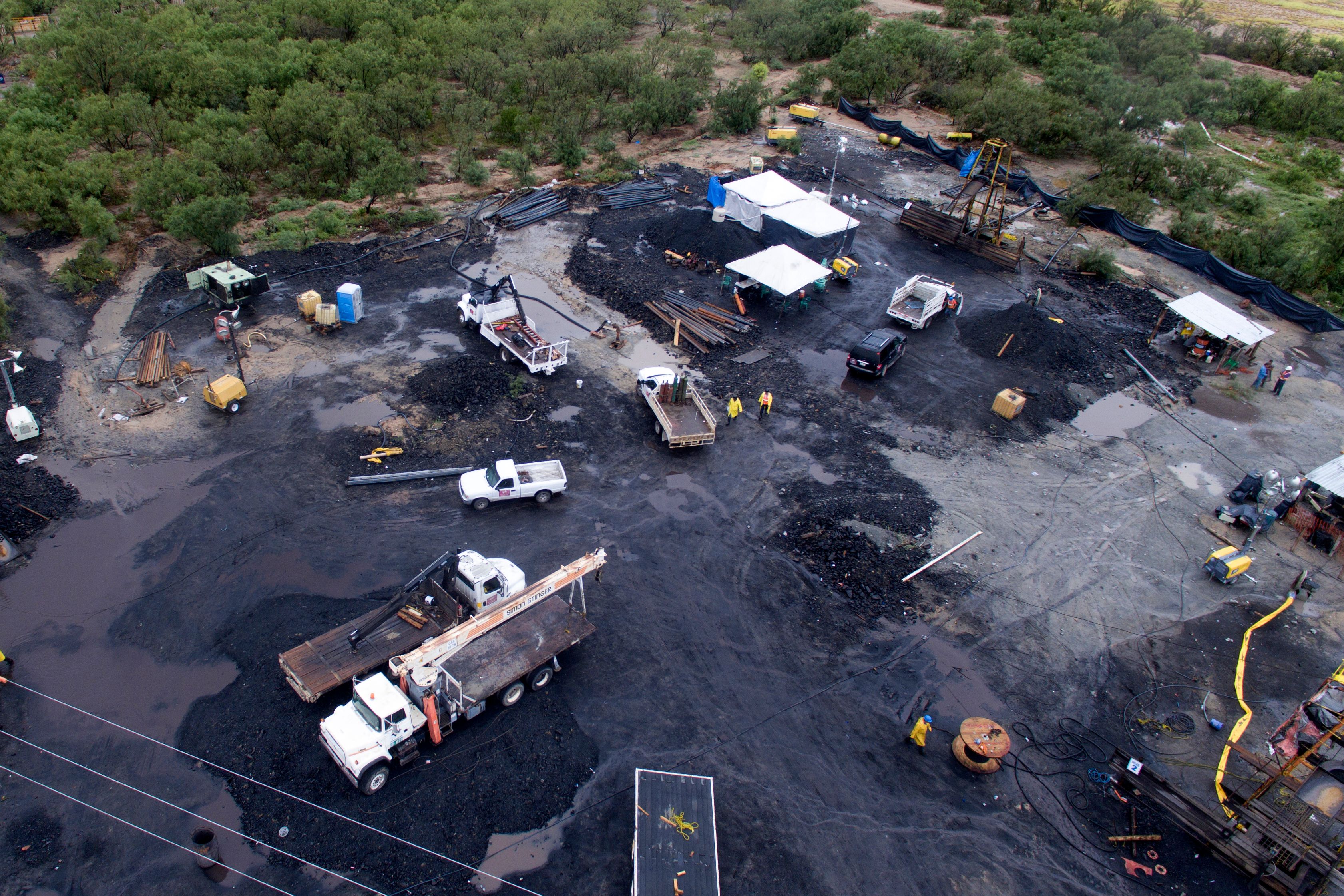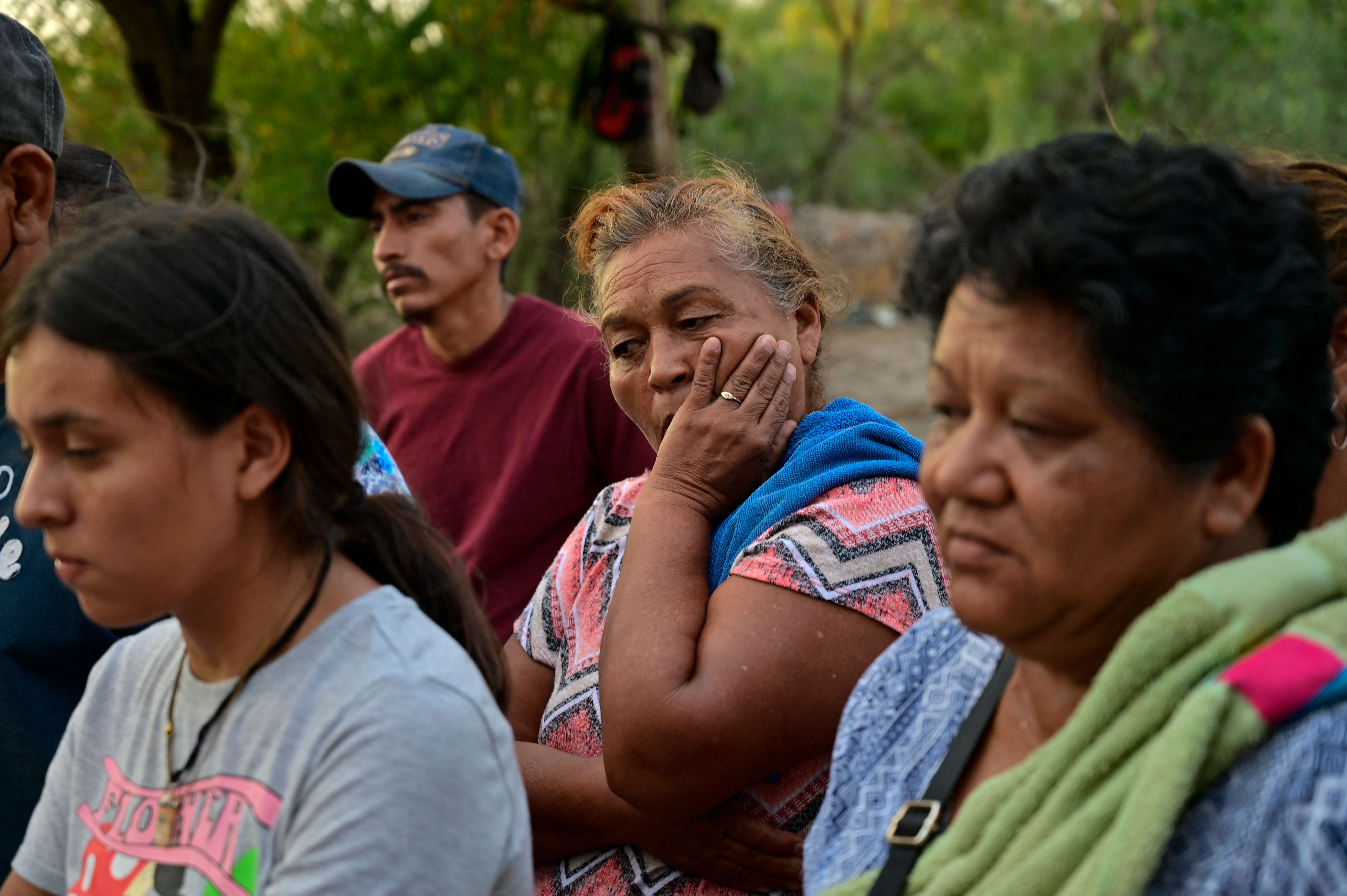A Mine in Mexico Flooded 2 Weeks Ago. 10 People Are Still Trapped.
August 18, 2022MEXICO CITY—The last thing Raymundo Tijerina Amaya, 33, said he remembers from inside the coal mine was a bang, a gust of wind, and then water—everywhere. The water kept pushing him down as he waved his arms around trying to swim. He doesn’t know how he emerged—he thinks maybe air pressure pushed him up so he could be rescued.
“I had given up. My arms were tired. I had given up. I just couldn’t,” Tijerina, who earned $4,000 pesos a week, or $200, working at the mine, told local media Telediario Regional.
Tijerina is one of five workers who escaped from the El Pinabete coal mine, in the northern Mexico state of Coahuila, after it flooded on Aug. 3. But more than two weeks later, 10 workers, including one of Tijerina’s brothers, remain trapped with floodwaters of more than 130 feet. Efforts to rescue them—dead or alive—have faltered, alongside harsh conditions and accusations of government ineptitude.
“If they aren’t dead from drowning, they are dead from exposure. It’s cold and damp in those mines,” said Jack Spadaro, a mine safety and environmental expert based in West Virginia. “Probably all the entries into the mine are plugged with water, so there is no ventilation. Even if they are in a safe place, it’s going to be a limited amount of time for them to live because of the depletion of oxygen.”

The tragedy unfolding 80 miles south of Eagle Pass, Texas, has enraged relatives of the missing miners, who have criticized Mexican President Andrés Manuel López Obrador for moving too slowly and not doing enough. It’s also raised questions about an industry that has offered an economic pillar for rural, impoverished communities in Mexico but where accidents happen with alarming regularity.
The disaster at El Pinabete occurred around 1:35 p.m. when mine workers breached a neighboring space filled with water, triggering flooding in three mine shafts that reached more than 100 feet, according to Mexican authorities. Immediately after, engineers used more than a dozen pumps to bring water levels down to between 16 feet and 30 feet. Mexican Army divers then attempted to carry out a search mission, but heavy debris, including planks of wood, obstructed their access.
Then, on Aug.15, water levels in the mine once again surged—reaching 135 feet in one shaft—because of water seeping in from the nearby Conchas Norte mine, which shut down in 1996 due to flooding of its own. Engineers are now working to seal off the two mines from each other, while continuing to pump water out of El Pinabete.
Spadaro, who also served as the director of the National Mine Health and Safety Academy from 1996 to 2004, said the mining accident should never have occurred.
“The water stored in the adjacent Conchas Norte mine should have been drawn down before mining began in the Pinabete mine, and accurate mine maps should have been consulted so there was at least a 200 feet separation between the old mine workings and the new mine,” he said. “What has happened there is inexcusable in this day and time. There is plenty of technology available to the mine operator that could have been used to prevent the flooding.”

López Obrador was asked at his daily press conference on Thursday why engineers didn’t attempt to seal off the two mines sooner. “It’s a matter for the technicians and specialists and the miners who know the terrain very well,” the president responded, before launching into a criticism of journalists questioning the authorities’ response.
Several relatives of the missing miners have accused Mexican authorities of lying to them, dragging their feet, and even using their pain as a photo opportunity. López Obrador’s visit to the mine on July 7, when he promised “there will be justice,” did little to quell their anger.
“He has come to take a photo with my pain, the pain of my family and the pain of everyone of us here,” said Lucía Rodríguez, the mother of one of the miners, in a video circulated on social media. “I hope that his photographs serve his policy well.”
Thousands of small mines operate across Mexico, many of which are managed by locals who lack industry-standard safety practices and equipment. In the small municipality of Sabinas, where El Pinabete is located, there are 276 mining concessions, according to Aristegui News, a Mexican investigative news outlet, and in the state of Coahuila, a total of 2,753. In June and July 2021, nine miners died in Coahuila as the result of cave-ins at two mines.
Mexico’s worst mining accident also happened in 2006 in Coahuila, when an explosion at the Pasta de Conchos mine killed 65 workers. Only two of their bodies were recovered.
The latest tragedy underlines “evidence of an absent state… that shows itself incapable of guaranteeing basic conditions of safety at work and environmental protection, and that, on the contrary, is docile in granting permits, concessions and tenders for the exploitation of subsoil resources,” wrote Mario Patrón, rector of the jesuit university IBERO Puebla, in an editorial published by the left-learning newspaper La Jornada, which generally supports the president.
On Friday, the Mexico attorney general’s office announced it had requested a judicial hearing in Coahuila to charge someone they claim to be affiliated with the mine with “illicit exploitation” and “failing to comply with the obligations” required for coal mining. Authorities publicly identified him only as “Christian S.”
Two weeks after the mine’s collapse, Mexican authorities asked a German and U.S. company to review rescue efforts and plans, according to Laura Velázquez, Mexico’s national civil defense coordinator.
Phoenix First Response, which specializes in underground rescue efforts, arrived at the mine site Wednesday afternoon, while DMT Group, which advertises consulting and engineering solutions for the mining industry, “recognized that an appropriate plan has been followed,” Velázquez said during the president’s press conference Thursday. The companies didn’t immediately respond to requests for comment.
Want the best of VICE News straight to your inbox? Sign up here.
